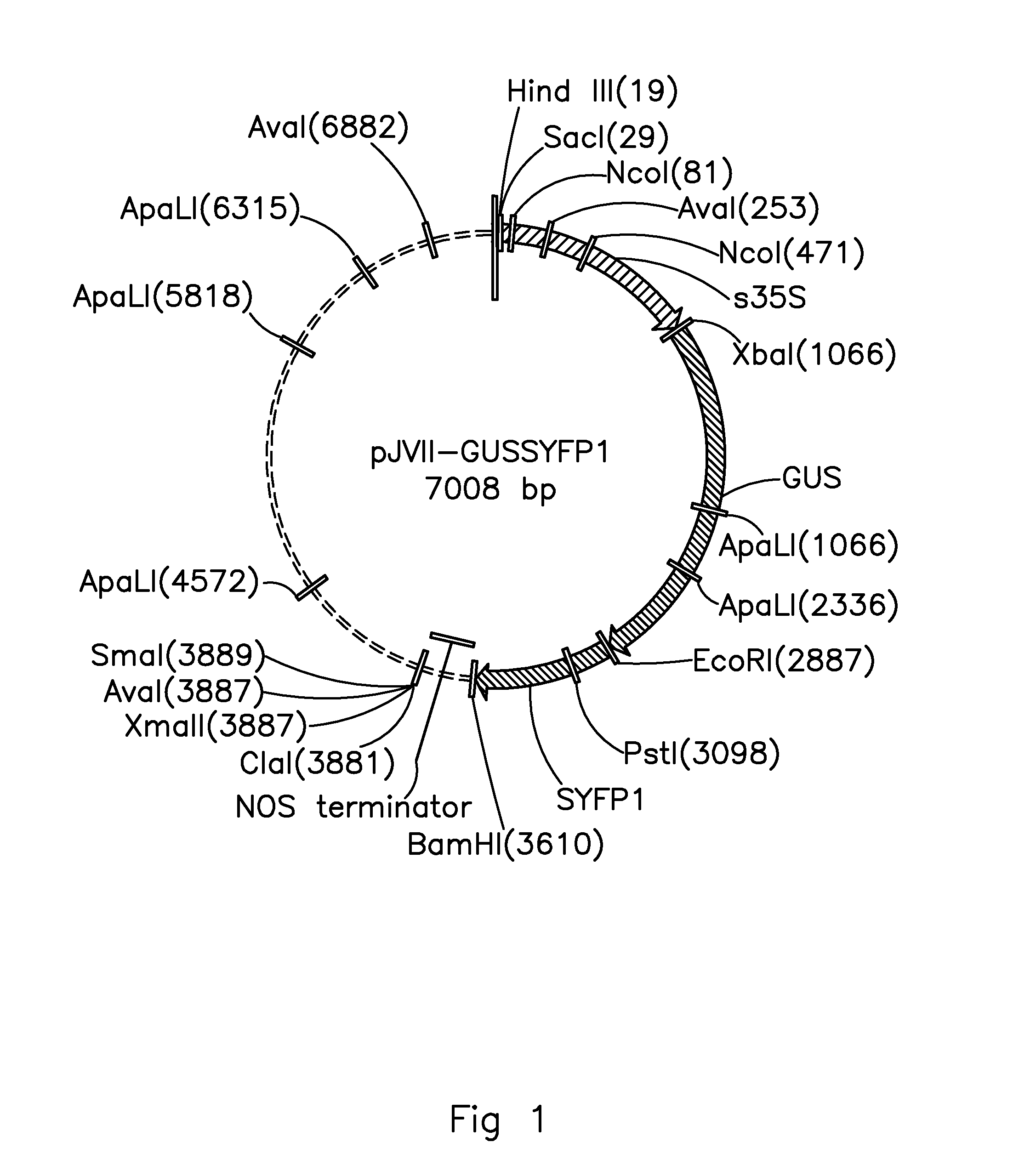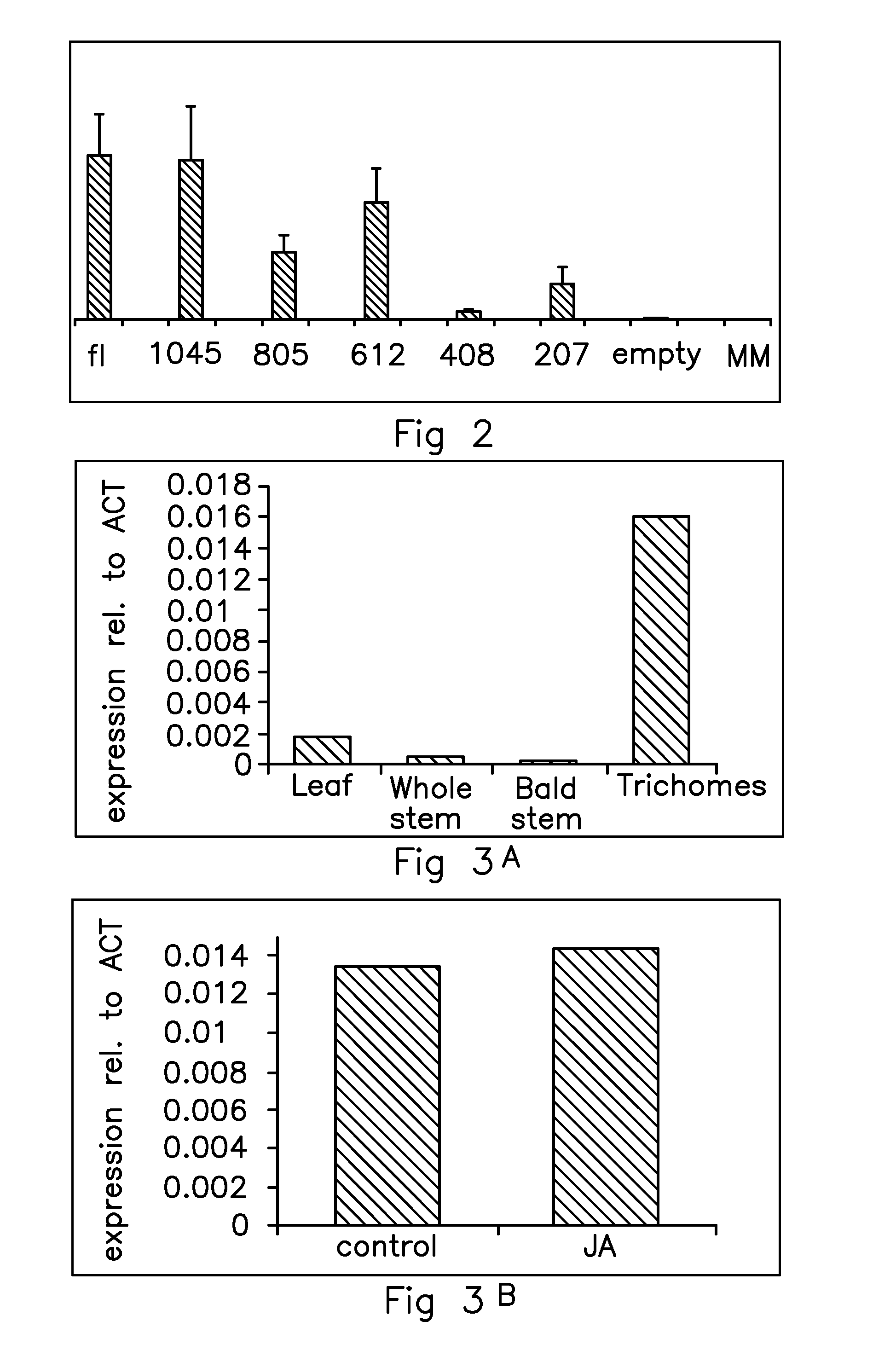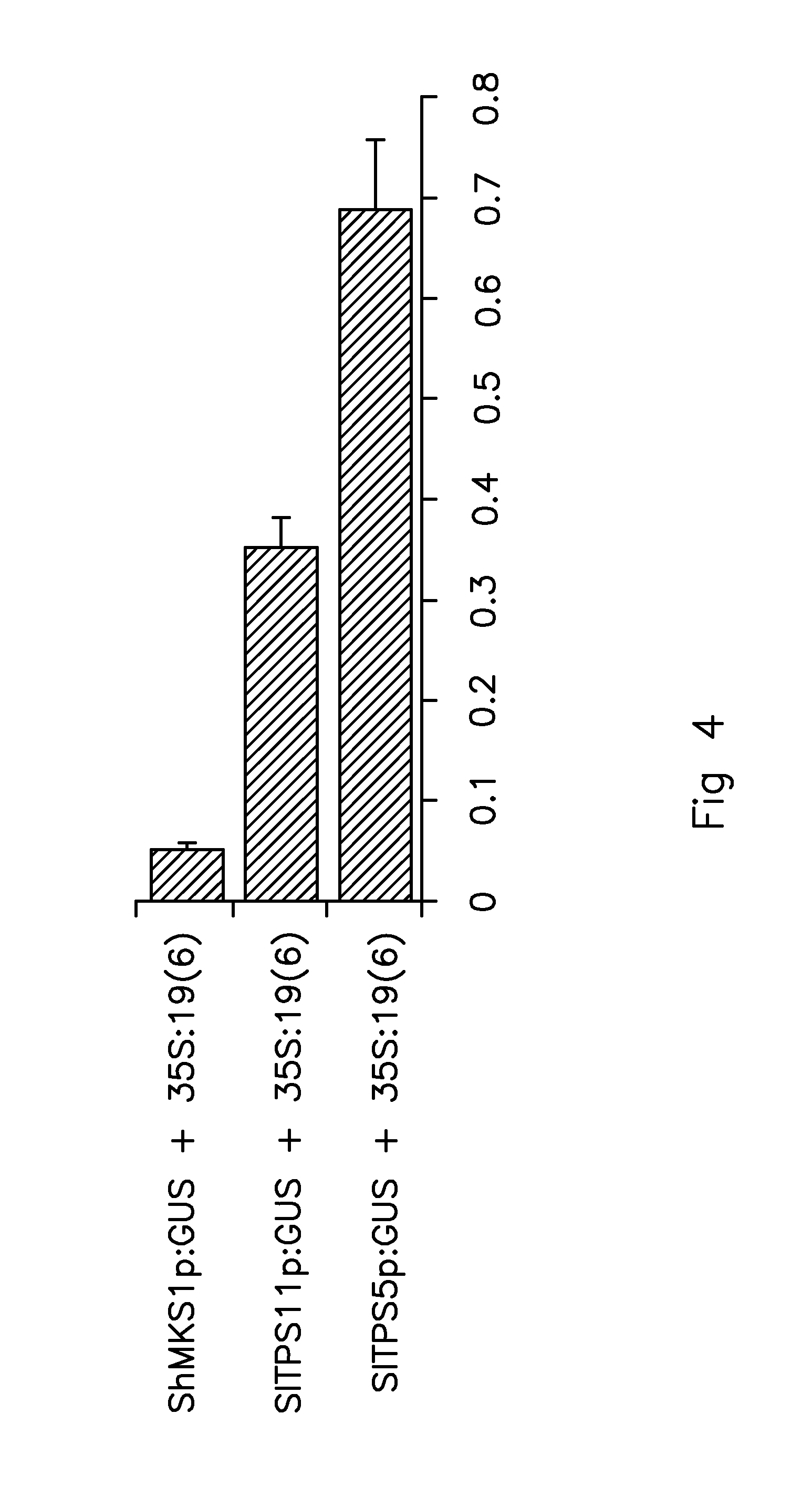Transcription factor modulating terpene biosynthesis
a transcription factor and biosynthesis technology, applied in the field of zinc finger transcription factor, can solve the problems of time-consuming and costly programs for introgression of useful traits into cultivated varieties, and achieve the effect of improving production or secretion
- Summary
- Abstract
- Description
- Claims
- Application Information
AI Technical Summary
Benefits of technology
Problems solved by technology
Method used
Image
Examples
example 1
Plant Material, Hormone Treatment and RNA Isolation
[0155]Tomato plants (Solanum lycopersicum cultivar Moneymaker) were grown in soil in a greenhouse with day / night temperatures of 23° C. to 18° C. and a 16 / 8 hours light / dark regime for 4 weeks. Trichomes were collected at the bottom of a 50 ml tube by vortexing stem pieces frozen in liquid nitrogen. The remaining cleaned stem segments were thoroughly brushed to remove all remaining trichome material (bald stem sample). Whole stems (including trichomes) and leaves were also frozen in liquid nitrogen, the material was ground and total RNA was isolated using Trizol (Invitrogen, Paisley, UK).
[0156]Jasmonic acid (JA) was applied to plants by spraying 1 mM solution made with tap water containing 0.05% SilwetL-77. Control plants were sprayed with tap water containing 0.05% SilwetL-77. Trichomes were collected 24 hours later and total RNA was isolated as described above. DNA was removed with DNase (Ambion, Huntingdon, UK) according to the m...
example 2
Constructs and Stable Plant Transformations
[0157]The full SITPS5 promoter and a series of 5′ deletions of it were generated using PCR. A SacI restriction enzyme site was created at the 5′ end of each forward primer and an XbaI restriction enzyme site at the 3′ end of the reverse primer. Fifty ng of plasmid DNA pKG1662adp-SIMTS1p:GUS were used as template with 0.25 units of Phusion Hot Start polymerase (Finnzymes, Espoo, Finland), each primer in a concentration of 0.4 mM and dNTPs in a concentration of 0.2 mM in 25 μl reaction volume. MgCl2 was added to the PCR mix with a final concentration of 0.3 mM. The cycling program was set to 1 min 98° C., 30 cycles of 10 sec 98° C., 30 sec 58° C., 60 sec at 72° C., followed by 5 min final extension at 72° C. and cooling to 12° C. until removed from the thermocycler.
[0158]Primers used (5′->3′ sequence, numbers indicate the position of the 5′ nucleotide of each primer. The A of the start codon ATG is assigned to +1):
SI_TPS5p-18 R(SEQ ID NO: 4)G...
example 3
Analysis of Transgenic Plants
[0160]One transgenic line was obtained from the empty pBINplus vector, four independent transgenic lines from the full length SITPS5 promoter construct, three from the 1045bp SITPS5 promoter construct, five for the 805bp and 612bp SITPS5 promoter constructs, eight for the 408 bp SITPS5 promoter construct and nine for the 207bp SITPS5 promoter construct. Insertion of the transgene was verified by PCR on genomic DNA isolated from leaves of the different TO lines.
[0161]Primers used (5′->3′ sequence):
pJVII_1182GUS_R(SEQ ID NO: 11)CCACCAACGCTGATCAATTCpJVII_6936_F(SEQ ID NO: 12)ATGTGCTGCAAGGCGATTAAG
[0162]The PCR was performed with Taq DNA Polymerase (Fermentas, St. Leon-Rot, Germany) in 25 μl volume according to the manufacturer and the cycling program used was set to 2 min 95° C., 30 cycles of 30 sec 95° C., 30 sec 58° C., 90sec at 72° C., followed by 5 min final extension at 72° C. and cooling to 12° C. until removed from the thermocycler.
[0163]Initial YFP e...
PUM
| Property | Measurement | Unit |
|---|---|---|
| Fraction | aaaaa | aaaaa |
| Fraction | aaaaa | aaaaa |
| Fraction | aaaaa | aaaaa |
Abstract
Description
Claims
Application Information
 Login to View More
Login to View More - R&D
- Intellectual Property
- Life Sciences
- Materials
- Tech Scout
- Unparalleled Data Quality
- Higher Quality Content
- 60% Fewer Hallucinations
Browse by: Latest US Patents, China's latest patents, Technical Efficacy Thesaurus, Application Domain, Technology Topic, Popular Technical Reports.
© 2025 PatSnap. All rights reserved.Legal|Privacy policy|Modern Slavery Act Transparency Statement|Sitemap|About US| Contact US: help@patsnap.com



